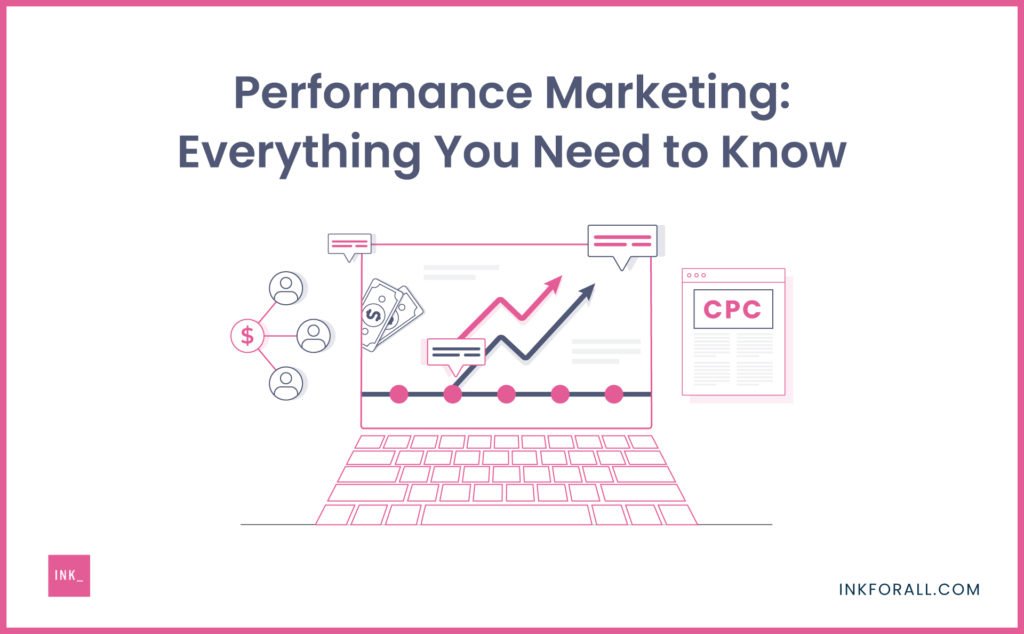

Interest in performance marketing is rising every day as more shoppers rely on retail websites. Here’s everything you need to know about this online advertising strategy and how to leverage it for your business.
Main Performance Marketing Takeaways:
- Performance marketing is an online marketing strategy that’s based on performance.
- Brand marketing focuses on long-term results compared to performance marketing.
- Growth marketing is not the same as performancemarketing.
- Search engine optimization is an essential aspect of performance marketing.
- Some performance marketing types are: social media advertising,native advertising, affiliate marketing, and searchenginemarketing.
- The primary benefit of performance marketing is the advertiser’s ability to track results against expenses.
Marketing is an essential part of any business endeavor.
Besides improving sales, marketing also helps create the necessary buzz around your brand. However, getting excellent marketing results involves setting specific goals and measuring some key performance indicators.
That’s where performancemarketing comes in. This article explores what it means, the types, and benefits.


Eviction Notice: Writer’s Block
Get unstuck with INK. Craft high-quality content effortlessly. Never be stopped by writer’s block again.
Let’s jump right in.
What is Performance Marketing?
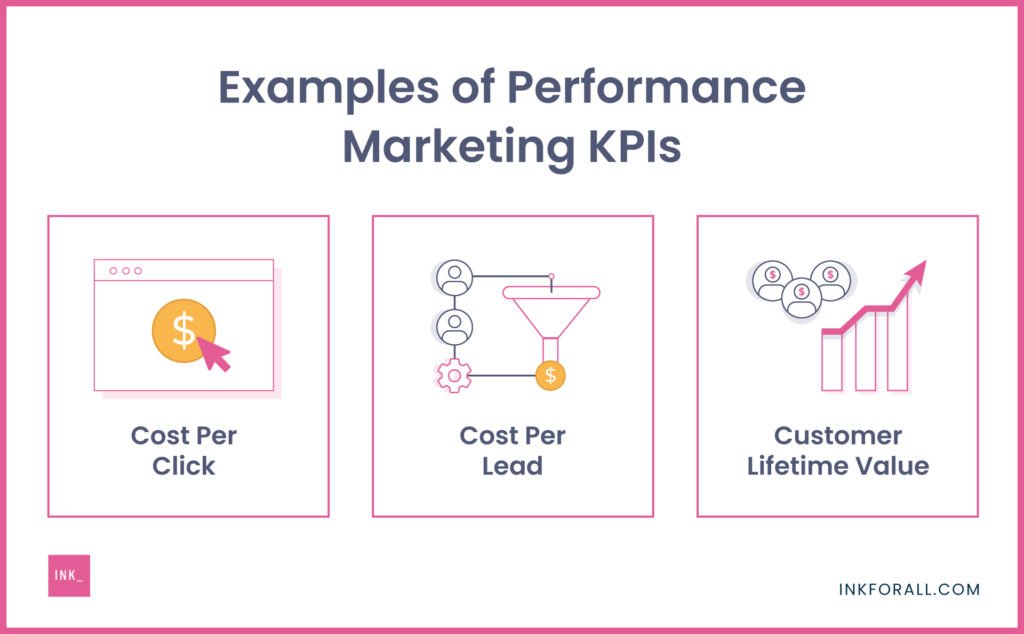

Performance marketing is an online marketing strategy that’s based on performance. This means that advertisers pay marketing companies or advertising platforms only after consumers carry out specific actions. These can include clicks, leads, bookings, downloads, or sales.
Depending on the performance marketing channel, some KPIs include:
- CPC — Cost Per Click
- CPM — Cost Per Mile
- CPA — Cost Per Action
- CPL — Cost Per Lead
- LTV — Lifetime Value
As you may have guessed, a performancemarketing strategy provides a win-win opportunity for both parties.
Merchants can determine the specific actions that they want to drive — clicks, sales, or leads. At the same time, a performance marketing agency gets paid only after achieving the retailer’s marketing goal.
Indeed, that’s why it’s called performance marketing.
There’s just one slight hiccup. A few retailers are still unsure of how this online marketing strategy works.
As a result, they tend to use the word performancemarketing interchangeably with other digital marketing methods. After all, marketing is marketing, right? Well, not really.
So, let’s unpack these misconceptions.
What is the Difference Between Brand and Performance Marketing?
Performancemarketing is primarily about hitting or exceeding specific KPI goals. Meanwhile, brand marketing involves promoting your product or services in a way that bolsters the brand. In other words, you’re using your brand as the bridge between the product and consumers.
As a result, brand marketing focuses on long-term results compared to performancemarketing.
Be that as it may, you can merge both marketing methods into a cross-team strategy called performancebranding. In such a case, the KPI is the revenue potential and the brand lifetime value.
Is Growth Marketing the Same as Performance Marketing?
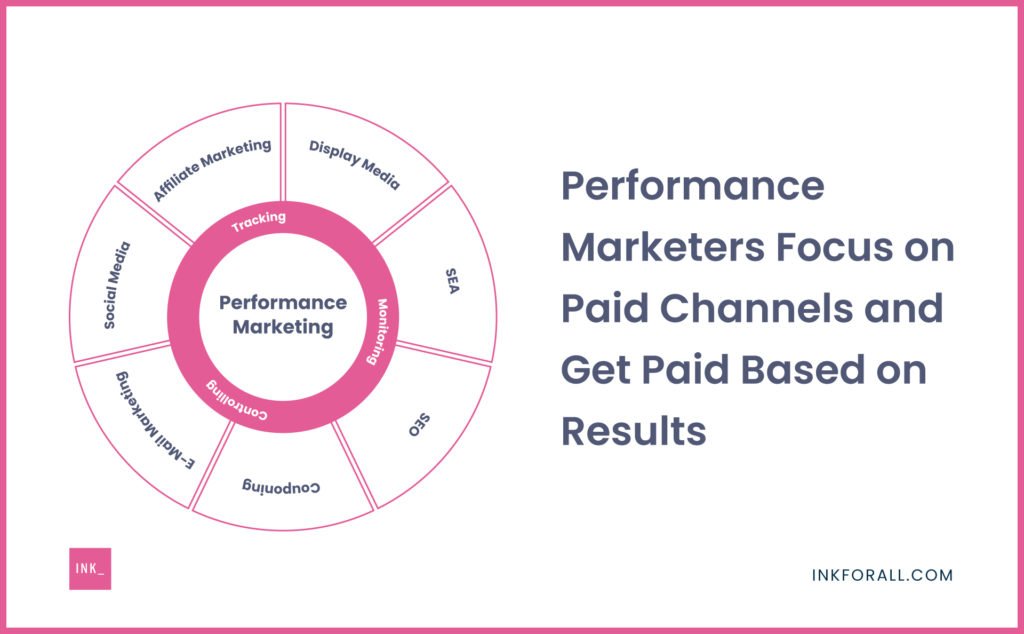

No, growth marketing is not the same as performancemarketing. Performance marketers tend to focus on paid channels and typically get paid based on results. On the other hand, growth marketers create holistic marketing strategies for sustainable business growth.
Here are some other differences between performancemarketing and growth marketing.
1. Period
Growth marketing involves optimizing your entire marketing strategy for a sustainable, meaningful return on investment. Unlike performancemarketing, this marketing method focuses on long-term results.
2. Expected Result
Success in performancemarketing depends on meeting specific key performance indicators. On the other hand, growth marketing success depends on the ability to scale the entire business.
3. Technique
Performancemarketing relies on tried-and-true techniques. Meanwhile, growth marketing involves using growth hacking techniques to experiment on various channels.
These include social media, content marketing, paid advertising, and searchengineoptimization. That brings us to the next question:
Is SEO Part of Performance Marketing?
PPC, native advertising, and social media advertising are the three key marketing channels that aspects of performancemarketing. So, what does SEO have to do with performancemarketing? Well, it represents the very beginning. SEO is the catalyst that ignites the other marketing channels. It helps bridge the gap between traffic and conversion. And it paved the way for performancemarketing to be launched.
In other words, search engine optimization is an essential aspect of performancemarketing. But there are others.
What are the Types of Performance Marketing?
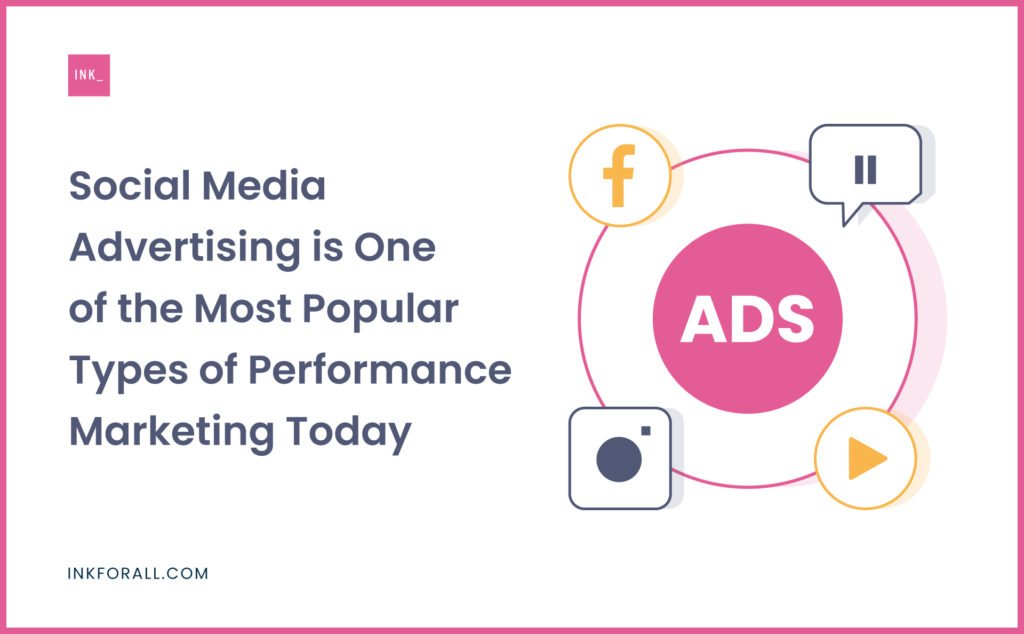

The four common types of performancemarketing are: social media advertising, native advertising, affiliate marketing, and search engine marketing. Let’s delve a little deeper.
1. Social Media Advertising
Social media advertising involves using social media platforms to connect with your audience, drive traffic to your website, and increase sales.
According to a study on social network users, over 3 billion people globally are currently on at least one social media platform. What’s more, that number should grow to a whopping 4.4 billion by 2025.
Businesses use social media platforms such as Facebook, Instagram, and Twitter to gain traffic and boost brand awareness. However, it’s also handy for boosting engagement, leads, and sales.
Some key performance indicators for social media advertising are:
- Likes
- Comments
- Impressions
- Shares
With that said, the metrics above are only useful for organic social media advertising. For paid content, the CPM may be the most crucial KPI.
2. Native Advertising
Native advertising involves using paid ads that match the form and function of the media format in which they appear.
In other words, this form of paid advertising blends seamlessly with the environment. For example, they appear in the form of suggested articles in social media feeds or news sites.
Here’s how to measure the performance of your native advertising campaign based on specific goals.
- Brand awareness: Viewable impressions
- Unique visitor: Click-through rate (CTR)
- Behavior: Bounce rate, Page per session
- Conversion: Downloads, sign-ups, sales
Other pricing models for native advertising are CPC and CPM.
3. Affiliate Marketing
Affiliate marketing is performance-based marketing in which a business rewards an affiliate for specific actions. These can include traffic, leads, free trial users, or sales. Here’s how it works.
The affiliate marketing process begins with the affiliate sharing a product or service on their platform — whether a blog, social media, or a podcast. Then, they can earn a commission on any purchase that occurs via the platform.
The key performance indicators for affiliate marketing include:
- Click-Through Rate (CTR)
- Conversion Rate
- Cost Per Action (CPA)
- Average Order Value (AOV)
As simple as it sounds, this online marketing type is quite effective. Indeed, advertisers generate between 15% and 30% of all sales from affiliate programs.
It’s no wonder that performancemarketingmanagement might favor affiliate marketing.
4. Search Engine Marketing (SEM)
Search engine marketing is a paid advertising form that involves using search engines result pages (SERPs) to increase your brand’s visibility. It allows you to reach searchers on Google, Bing, and Yahoo.
Here’s how it works.
SEM involves paying for ads to appear as search results on SERPs The brand targets specific keywords that searchers might use. That way, their paid ad can pop up when users type those keywords in the query box.
With that said, search advertising platforms only charge if a user clicks on a specific ad. Besides CPC, other KPIs for search engine marketing include:
- Ad impression
- Engagement
- Conversion
- Click-Through Rate
Moreover, it’s important to note that various companies measure their SEM campaigns differently. While some use performance, others partner with performancemarketingagencies and measure based on results.
So, we’ve looked at what performancemarketing means and the various types it can encompass.
You may have one lingering question, though.
What are the Benefits of Performance Marketing?
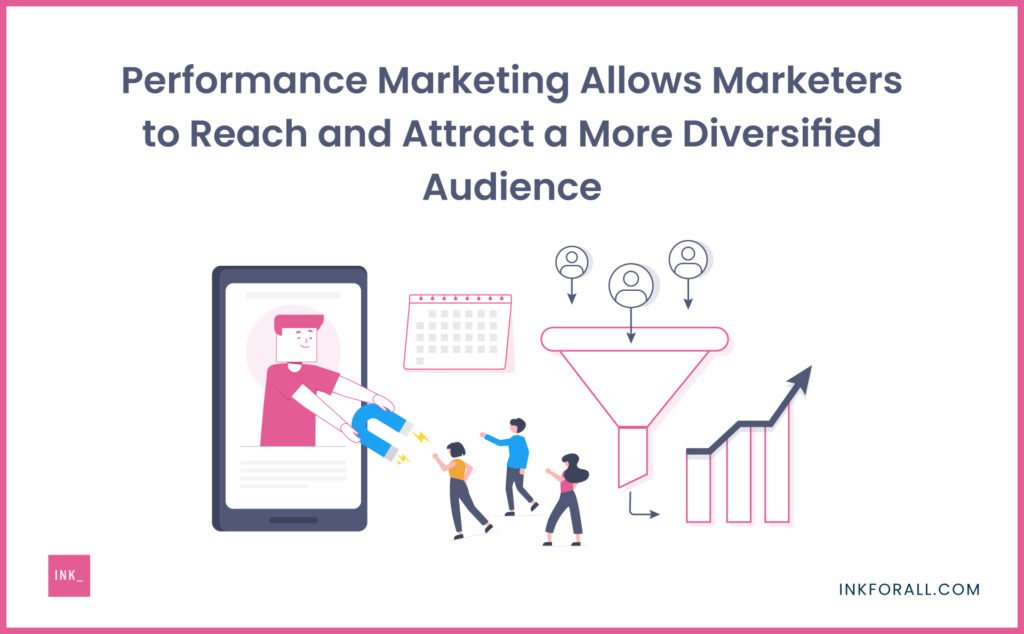

The primary benefit of performancemarketing is the advertiser’s ability to track results against the expenses. Since each transaction relies on prospects’ actions, you only have to pay for the successful ones. Unlike traditional marketing, measurement in performancemarketing is not based on estimates. Instead, it relies entirely on results.
Besides being easy to track, here are other benefits of performancemarketing.
1. Extend Your Reach
Performancemarketing allows you to reach a more diversified audience than traditional advertising.
It provides access to publishers, social media influencers, and affiliates working together on one goal. And that’s to market your brand, product, or service to their audience.
As a result, you can now reach into specific niche markets that you might never have considered.
2. Greater Flexibility
You can enjoy so much flexibility with performancemarketing — and for obvious reasons. The numbers dictate your approach. So, if a specific marketing strategy isn’t working, you can adapt and react in real-time.
For example, an ad with a specific headline may deliver a higher CTR than others. You could then use the same headline on other digital channels to replicate the result.
3. Convenient Planning Process
Since performancemarketing is primarily about results, its planning process is relatively straightforward.
It begins with identifying your goals and an acceptable CPA for each of your marketing goals. That way, you can quickly determine the ideal budget for your campaign.
For example, your goal could involve getting 100,000 website visits every month. If you’re paying $0.20 per click, your budget would be $20,000.
To Wrap Up: Use Performance Marketing to Improve
Several performance-based platforms — such as Google Ads, Facebook Advertising, Affiliate sites — exist on the web today.
So, setting up a performancemarketing campaign is relatively straightforward. This is especially useful for small business owners lacking the budget for a performancemarketingagency.
With that said, it’s vital to determine your marketing goals ahead. In other words, what do you hope to achieve with the campaign? Are you looking to generate more leads, clicks, or conversions?
Regardless of your objectives, consider measuring the results and optimize your campaign based on those results. Then, repeat the process until you achieve your goals.
